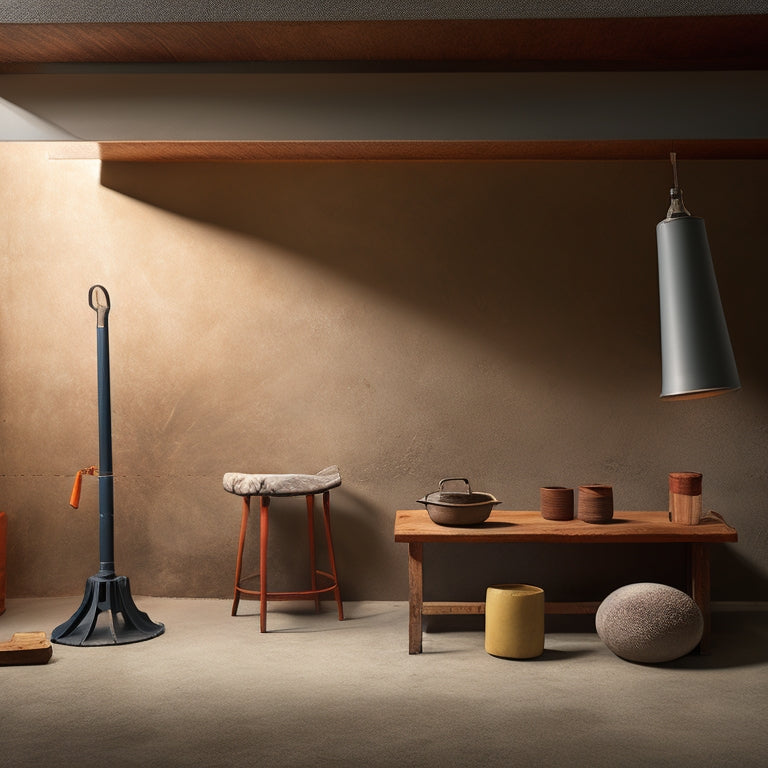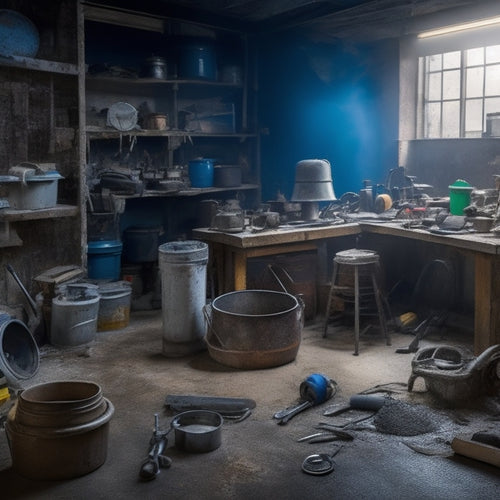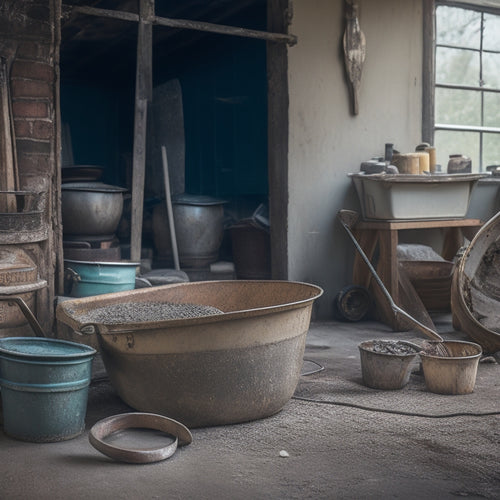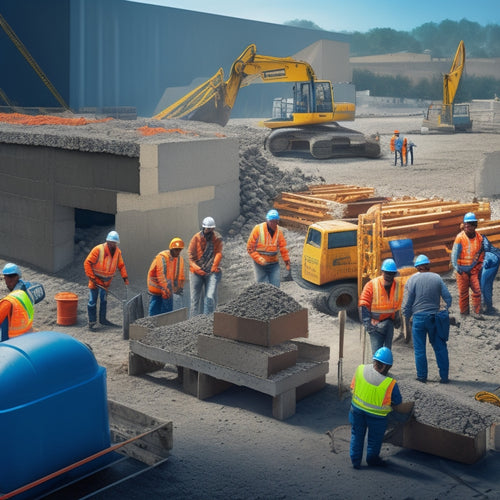
Top 3 Essential Tools for Concrete Wall Finishing
Share
When it comes to concrete wall finishing, having the right tools is vital for achieving a professional-looking result. You'll need a high-quality trowel, chosen based on the project's specific requirements, to guarantee a smooth finish. A reliable edger and cutting tools, such as a concrete saw or diamond blade saw, are also essential for creating sharp, defined edges and precise cuts. Additionally, a concrete float will help you flatten and smooth surfaces, and a steel trowel will refine the surface texture. With these top three tools in your arsenal, you'll be well on your way to mastering the art of concrete wall finishing, and exploring the finer details that set exceptional projects apart.
Key Takeaways
• A pointing trowel is essential for filling gaps and creating a smooth surface in concrete wall finishing.
• A quality edger is necessary for creating sharp, defined edges and joints in concrete walls.
• A concrete float is vital for flattening and smoothing surfaces, removing imperfections and air pockets.
• A steel trowel is used for refining surface texture and uniformity, producing a professional-looking finish.
• Concrete sealants are crucial for protecting finished walls from stains and damage, enhancing appearance and durability.
Choosing the Right Trowel
Selecting the right trowel for the job is essential, as its shape, size, and material will greatly influence the quality of your concrete wall finish. You'll want to choose a trowel that's specifically designed for concrete wall finishing, as they come in various types and materials that cater to different finishing techniques and surface textures.
There are three primary trowel types: pointing, finishing, and notched. Pointing trowels are ideal for filling small gaps and edges, while finishing trowels are used for smoothing and leveling. Notched trowels, on the other hand, are perfect for applying and spreading concrete evenly.
When it comes to trowel materials, you'll typically find stainless steel, carbon steel, or aluminum options. Stainless steel trowels are corrosion-resistant and suitable for wet environments, while carbon steel trowels are durable and ideal for heavy-duty use. Aluminum trowels are lightweight and easy to maneuver, making them perfect for smaller projects.
Consider the specific requirements of your project and choose a trowel that fits your needs. With the right trowel in hand, you'll be able to achieve a professional-looking finish that meets your expectations.
Essential Edging and Cutting Tools
As you move on to the next stage of concrete wall finishing, you'll need to equip yourself with essential edging and cutting tools that allow you to create clean lines, precise angles, and smooth changes between surfaces.
These tools are vital for achieving a professional-looking finish and will help you master various edging techniques and cutting methods.
A quality edger is a must-have for creating sharp, defined edges and joints. Look for one with adjustable handles and a robust blade that can withstand the rigors of concrete.
For cutting methods, a concrete saw or a diamond blade saw is ideal for making precise cuts and scoring lines. These tools will help you navigate complex cuts and angles with ease.
Additionally, a concrete profiler or a corner cutter can be used to create rounded edges, chamfers, and other decorative profiles.
These specialized tools will enable you to add a level of sophistication and detail to your concrete wall finishing project.
Smoothing and Finishing Essentials
What tools will you need to guarantee a smooth, even finish on your concrete wall, free from imperfections and surface irregularities?
To achieve a high-quality finish, you'll require specialized tools that can efficiently smooth out the surface and eliminate any defects. A concrete float is an essential tool for this process. It helps to flatten and smooth the concrete, removing any air pockets and imperfections.
You'll also need a steel trowel to further refine the surface, creating a uniform texture. When it comes to achieving specific surface textures, you may need to use specialized tools such as a broom finisher or a stamping mat. These tools allow you to create unique patterns and textures on the concrete surface.
Finally, to protect your finished wall from stains and damage, you'll need to apply concrete sealants. These sealants not only enhance the appearance of the concrete but also provide a barrier against water, oil, and other substances.
Frequently Asked Questions
Can I Use a Regular Hammer for Tapping Finishing Nails?
You shouldn't use a regular hammer for tapping finishing nails, as it can damage the surrounding concrete. Instead, opt for a nail set or a hammer with a rubber or plastic tip to prevent marring.
How Do I Remove Dried Concrete From My Tools?
You've heard that soaking tools in water helps remove dried concrete, but does it really work? Yes, it does! Combine this technique with concrete remover techniques and tool maintenance tips, like using a wire brush and vinegar, to effectively clean your tools.
Is It Necessary to Wear Protective Gear When Finishing Concrete?
When finishing concrete, you must wear protective equipment, including gloves, goggles, and a mask, to take necessary safety precautions against skin and eye irritation, respiratory issues, and other potential health hazards.
Can I Finish Concrete in Extremely Cold or Hot Temperatures?
Like a master chef tempering ingredients, you'll need to adjust your concrete finishing techniques for extreme temperatures. In cold weather, use techniques like insulation and heating to prevent freezing, while in hot weather, employ strategies like misting and shading to prevent rapid drying.
How Long Does It Take for Concrete to Fully Cure?
You'll need to wait for the concrete to complete its curing process, which typically takes around 28 days, but can vary depending on factors like temperature, humidity, and mix design, affecting the overall curing time.
Conclusion
As you step back to admire your handiwork, the finished concrete wall rises like a masterpiece from the canvas of your labor.
With the right trowel, edging and cutting tools, and smoothing and finishing essentials, you've transformed raw concrete into a work of art.
Like a painter's brushstrokes, each tool has played its part in creating a seamless, polished finish that's as durable as it's beautiful.
Related Posts
-

7 Tools to Fix Damaged Concrete Floors
You're about to tackle that damaged concrete floor, and the right tools are essential for a successful repair. Start ...
-

Top Tools for Mixing Concrete at Home
When mixing concrete at home, you'll need a range of tools to guarantee a successful operation. Start with essential ...
-

7 Best Tools for Concrete Block Construction
You'll need a solid foundation, precise cutting, and seamless finishing to guarantee your concrete block construction...


